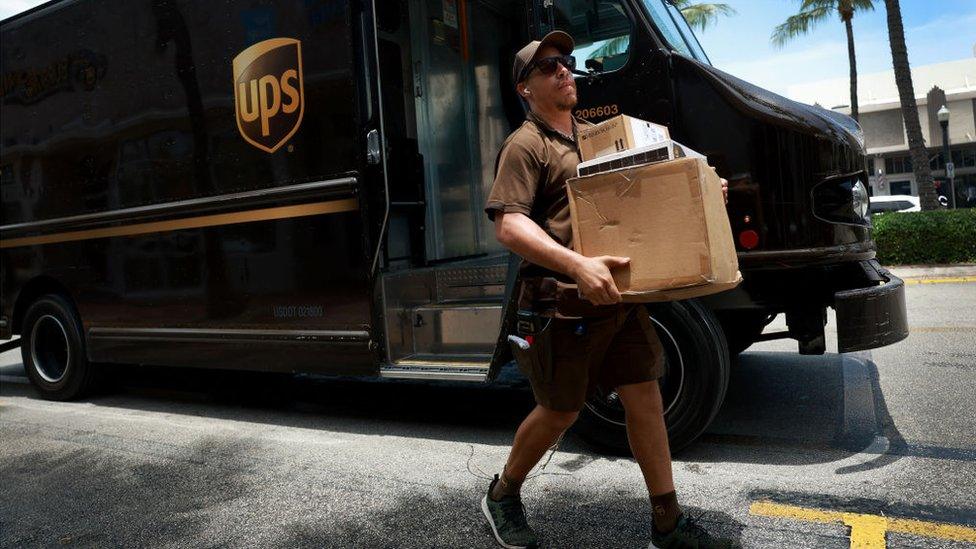Parcel delivery giant UPS avoids first strike in 25 years
- Published

UPS has avoided its first US strike in more than 25 years as the union representing its workers said a new five-year contract has been approved.
The two sides have been negotiating for months over demands including higher pay and better working conditions.
In July, UPS said it had agreed a deal with the Teamsters Union to raise the average annual salary of full-time drivers to about $170,000 (£133,440).
This included healthcare and other benefits and is up from about $145,000.
The deal also gives workers one more day of paid holiday, ends forced overtime and adds air conditioning to new models of the company's trucks from next year.
"This is the template for how workers should be paid and protected nationwide, and non-union companies like Amazon better pay attention," the general president of Teamsters Sean M O'Brien said.
UPS warned earlier this month that its profits will be lower because of the deal.
The Atlanta-based firm is the world's largest package delivery company, with more than 20 million deliveries a day in more than 220 countries around the world.
In 2020, UPS estimated that the goods it handled were worth about 6% of the US economy, including time-sensitive shipments for healthcare firms and others.
Workers at Amazon and other delivery firms have pointed to the agreement as they pushed for their own pay raises.
Unions representing "essential" transportation workers such as pilots, port workers and delivery drivers have been enjoying stronger bargaining power in recent months due to the country's tight jobs market.
The latest data showed that layoffs in the US dropped to an 11-month low in July as the labour market has largely weathered aggressive interest rate hikes from the Federal Reserve since March 2022.
Economists are watching the pay increases closely, as some worry higher wages could start to feed into an inflation problem that started with pandemic-related supply issues.
US inflation hit a peak of 9.1% last year, far above the central bank's 2% target. But it has eased significantly as the shock to food and energy prices from the war in Ukraine has faded.
This year, wage growth has started to outpace inflation which means that it could start to push up prices as consumers spend more money.
Related topics
- Published8 August 2023

- Published5 July 2023
